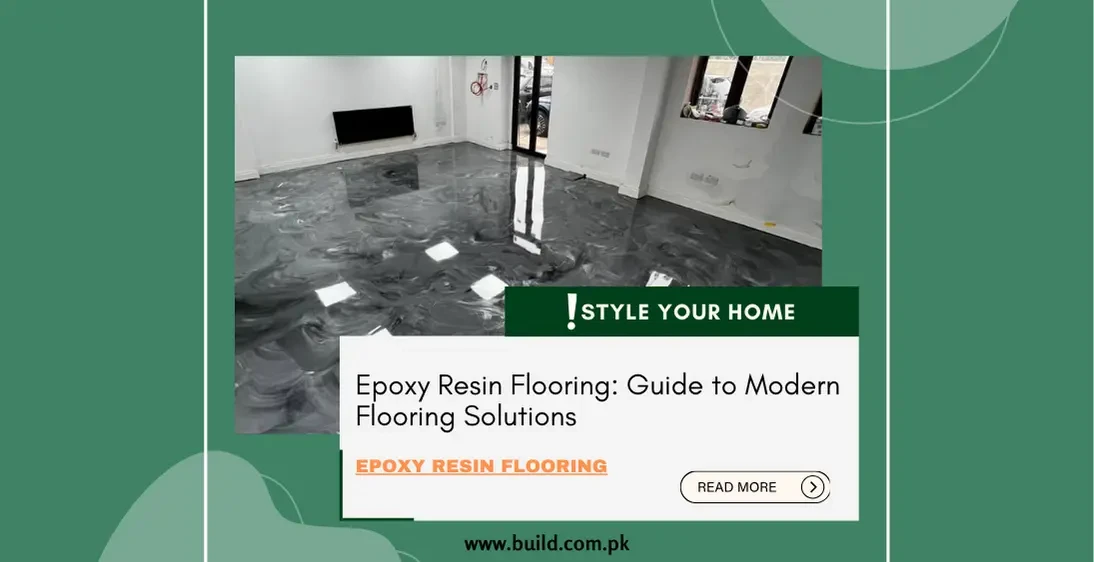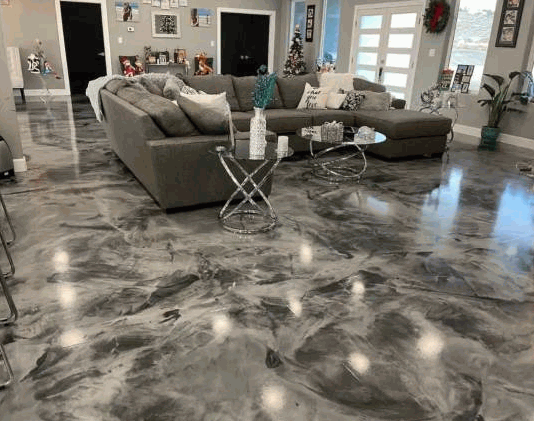Epoxy Resin Flooring: Guide to Modern Flooring Solutions

Introduction:
Epoxy resin flooring has emerged as a leading choice for both
commercial and residential spaces due to its exceptional durability,
versatility, and aesthetic appeal. In this comprehensive guide, we will delve
deep into the world of epoxy resin flooring, exploring its benefits,
installation process, design options, maintenance tips, and diverse
applications across various industries. Whether you're considering epoxy
flooring for a warehouse, showroom, kitchen, or garage, this guide will provide
you with detailed insights to help you make informed decisions and transform
your space with this innovative flooring solution.
Understanding Epoxy Resin Flooring:
Epoxy resin flooring is a specialized coating made from epoxy
resin, a thermosetting polymer, and a hardening agent. When these components
are combined and applied to a prepared substrate, they chemically react to form
a strong, seamless, and highly durable surface. Epoxy floors are renowned for
their ability to withstand heavy use, resist chemicals and abrasion, and offer
a customizable finish that can enhance the aesthetics of any space.

Benefits of Epoxy Resin Flooring
Epoxy resin flooring offers a multitude of advantages over
traditional flooring options:
Exceptional Durability: Epoxy floors are incredibly durable
and can withstand heavy foot traffic, impact from machinery, and exposure to
chemicals without cracking or deteriorating.
Versatility in Design: Epoxy can be customized with a wide
range of colors, patterns, and textures, allowing for endless design
possibilities to complement any interior style.
Low Maintenance Requirements: Epoxy floors are easy to clean
and maintain, requiring only routine sweeping and mopping with mild detergents
to preserve their appearance and performance.
Chemical Resistance: Epoxy is highly resistant to chemicals
such as oils, acids, solvents, and cleaning agents, making it an ideal choice
for industrial settings, garages, and laboratories.
Safety Features: Epoxy floors can be enhanced with non-slip
additives to improve traction and safety, reducing the risk of slips and falls.
Longevity and Cost-Effectiveness: When properly installed and
maintained, epoxy floors can last for many years, offering a cost-effective
flooring solution over their lifespan.
Installation Process of Epoxy Resin Flooring
The installation of epoxy resin flooring involves several
essential steps to ensure a successful and long-lasting application:
Surface Preparation: The substrate, typically concrete, must
be thoroughly cleaned, repaired, and etched to remove contaminants and create a
suitable surface for epoxy adhesion.
Priming: A primer is applied to the prepared surface to
improve epoxy adhesion, promote uniformity, and prevent air bubbles or pinholes
in the final coating.
Epoxy Application: The epoxy resin and hardener are mixed
according to manufacturer specifications and applied to the primed surface
using rollers, squeegees, or brushes.
Decorative Options: During epoxy application, decorative
elements such as colored flakes, metallic pigments, or quartz crystals can be
broadcasted onto the wet epoxy to create unique patterns, textures, and
effects.
Curing and Sealing: The epoxy must be allowed to cure for the
specified time to achieve its full strength and durability. A clear topcoat or
sealer is then applied to protect the epoxy from UV exposure, abrasion, and
staining.
Design Options for Epoxy Resin Flooring
Epoxy floors offer endless design possibilities to enhance
the aesthetics of any space:
Solid Colors: Choose from a vast selection of solid colors to
create a sleek, modern look or coordinate with existing décor themes.
Flake Systems: Incorporate decorative color flakes or chips
into the epoxy for a terrazzo-like appearance that adds texture, hides
imperfections, and creates visual interest.
Metallic Effects: Achieve a luxurious finish with metallic
epoxy coatings that create depth, movement, and a reflective sheen with
shimmering pigments.
Quartz and Sand Blends: Combine epoxy with quartz or sand
aggregates to create a durable, slip-resistant surface that mimics the look and
texture of natural stone.
Applications of Epoxy Resin Flooring
Epoxy resin flooring is suitable for a wide range of
applications across different industries:
Commercial Spaces: Epoxy floors are commonly used in retail
stores, restaurants, showrooms, and offices to enhance aesthetics, durability,
and ease of maintenance.
Industrial Facilities: Epoxy is ideal for warehouses,
manufacturing plants, and laboratories due to its chemical resistance, seamless
finish, and ability to withstand heavy machinery.
Garages and Workshops: Epoxy flooring provides a durable,
stain-resistant solution for residential garages, workshops, and hobby areas.
Healthcare Facilities: Epoxy floors meet strict hygiene
standards and are easy to sanitize, making them suitable for hospitals,
clinics, and pharmaceutical facilities.
Food and Beverage Industry: Epoxy is FDA-compliant, seamless,
and resistant to stains, making it ideal for kitchens, food processing areas,
breweries, and wineries.
Maintenance Tips for Epoxy Resin Flooring
Proper maintenance is essential to preserve the appearance
and performance of epoxy floors over time:
Regular Cleaning: Sweep or vacuum regularly to remove dirt
and debris that can scratch the surface. Use a mild detergent and mop to clean
the floor as needed.
Avoid Harsh Chemicals: Use only recommended cleaning agents
that are compatible with epoxy to avoid damaging the surface.
Reapply Sealant: Periodically reapply a topcoat or sealer to
protect the epoxy from wear and tear, especially in high-traffic areas.
Address Repairs Promptly: Repair any damaged areas promptly
to prevent further deterioration and maintain the integrity of the epoxy
finish.
Conclusion:
Epoxy resin flooring offers a durable, versatile, and
visually appealing solution for modern spaces, whether commercial or
residential. By understanding the benefits, installation process, design options,
applications, and maintenance tips outlined in this guide, you can confidently
choose epoxy resin flooring as a superior flooring solution that combines
aesthetics with durability and longevity. Transform your space with the beauty
and functionality of epoxy floors, and enjoy the seamless, customizable, and
low-maintenance qualities that make epoxy a preferred choice for flooring in
today's architectural and design landscape.









